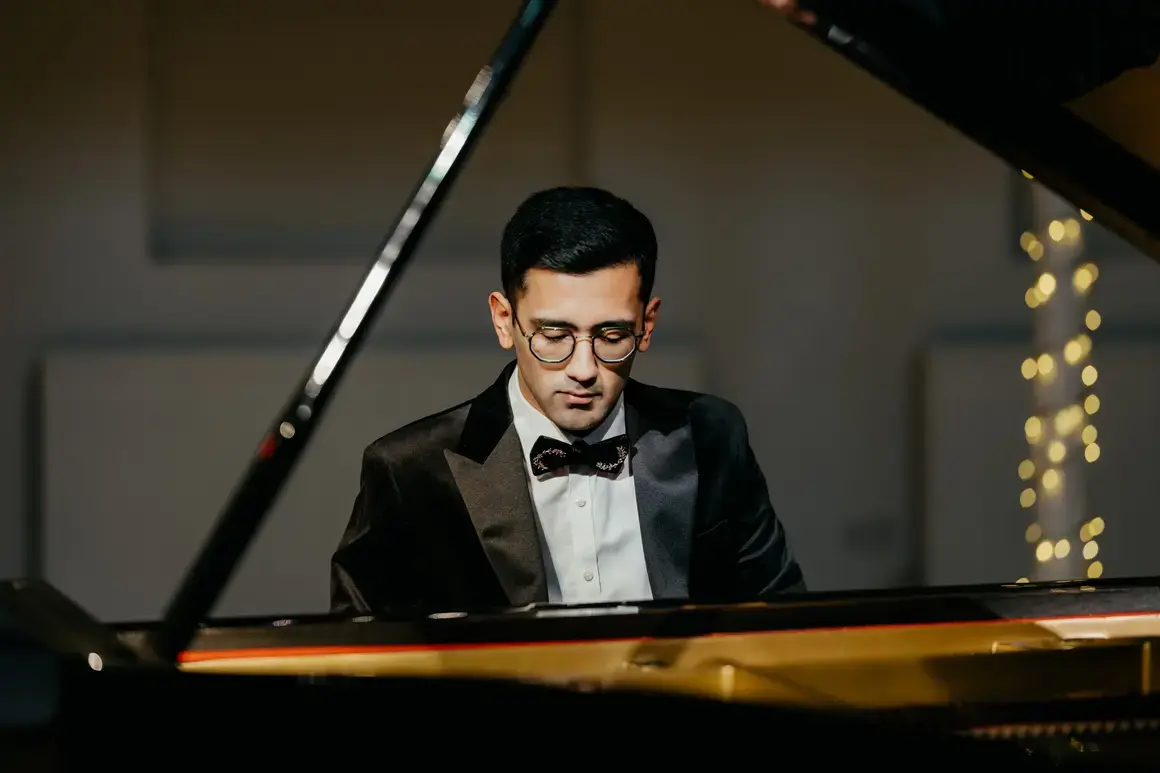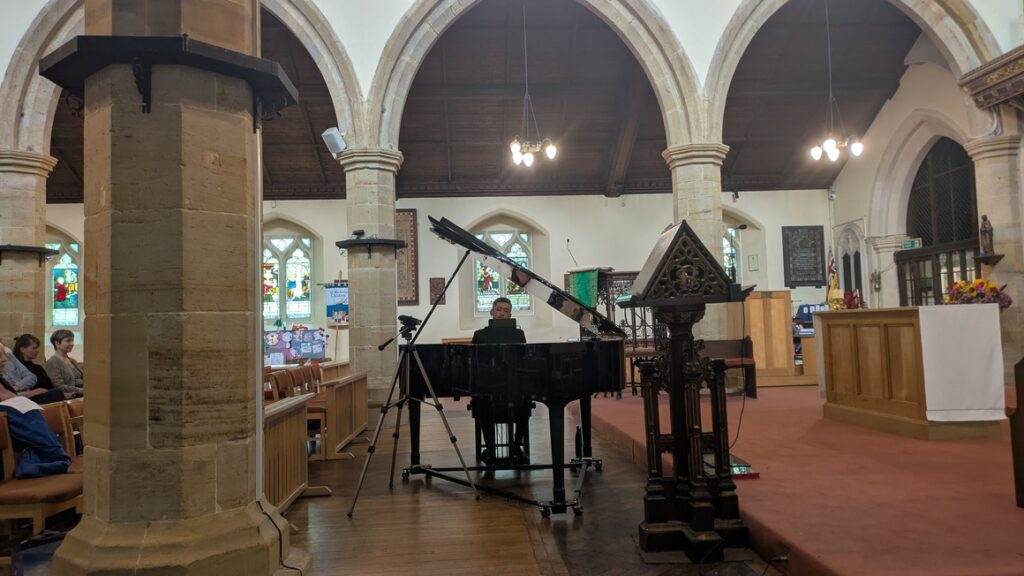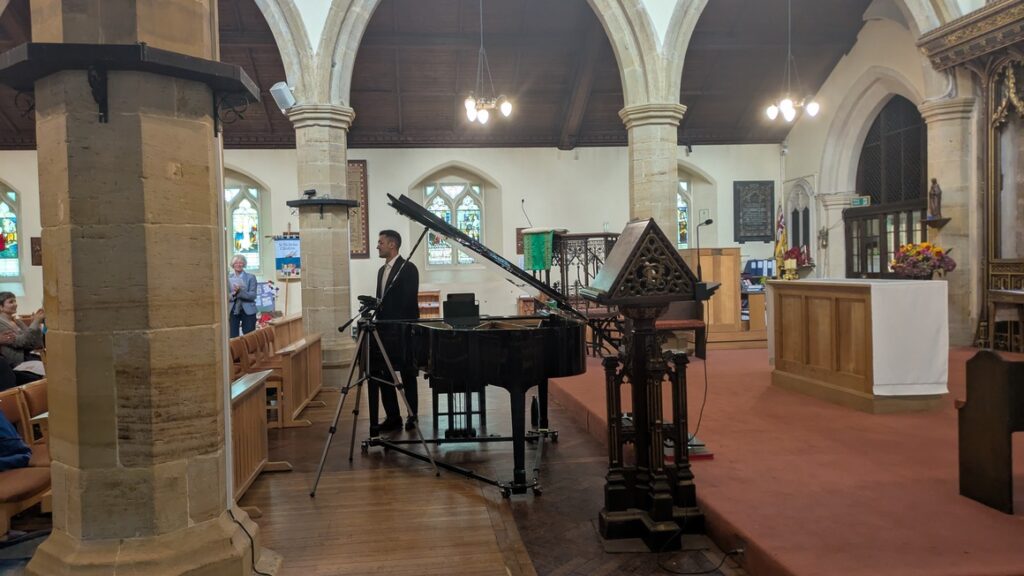Review by Simon Jenner, September 24 2025
★ ★ ★ ★★
Peter de Souza who arrives at St Nicholas, is not just a Mozart specialist but one who can discuss the particular qualities of his performance practice. De Souza is an improviser as well as concert pianist, an organist (where improvisation is de rigeur), clarinetist and gamelan player. His repertoire extends back to th French clavecinistes like Louis Couperin through the classical Austro-German tradition through Brahms, and then on to Scott Joplin, Jelly Roll Morton, Oscar Peterson and later 20th century composers like Argentinian Alberto Ginastera.
De Souza’s also one of the leading revivers of the lost art of improvisation, which was a core f classical composition, and shaped their work. Renowned for his brilliance at the keyboard Mozart could yet be jealous of Clementi (three-and-a half-years his senior). Their famous 1778 competition was a draw. Mozart sneered at Clementi’s facility with thirds and octaves, as here Clementi had an edge.
This means that Mozart wrote often in a shorthand for his own and others virtuosity to fill in. This, de Souza’s act of recreation is both improvisational to a degree and even slightly hypothetical. De Souza’s own concert sheet is beautifully produced, two-sided and full fo fascinating detail. His technique, it hardly needs adding, is consummate: crisp, full of bravura when called on for Mozartian fireworks; and of a particular tenderness in improvisatory passages.
That’s contradicted by the example of the haunting and haunted Rondo in A minor K511. Luckily written for publication in 1787 Mozart provided much detail. Detail that helps us with works not so lavishly endowed with indications.
The K511 is one of those insistent melancholic works that here in De Souza’s hands takes on its proper weight and affect. Not too slowly wrought it’s a gem of pianistic restraint realised by de Souza.
By contrast, Mozart’s penultimate Piano Sonata in B flat major K570 is one where de Souza feels it appropriate to add his own interpretive grace notes, and indeed interleaving. It’s quite startling. The first movement adding a Prelude to an Allegro has some remarkable and startlingly robust harmonies. The piano texture is on occasion denser and with Turkish effects not too far away, de Souza applies the janissaries sound world Mozart so liberally applied to many works. There’s evidence for it here in the brilliant B flat major key.
The Adagio is less ornamented but still there’s scope for it in the spaces, with an intermezzo introduction. Here there’s moments of an improvisatory-seeming introduction as we ease into the movement proper. It recalls the way pianists born in the 1840s and at the cusp of recording like Vladimir de Pachmann (1848-1933) would try much the same thing; but on works where it was clearly not done. Beethoven and Chopin in particular. But Beethoven’s own actions – instructions to “make no cadenza but ply straight on” – stem from a culture where of course these cadenzas and improvisations were taken for granted.
De Souza sashays in and out of his improvisatory feel but doesn’t adulterate Mozart once the score takes over after the extra preamble (that sounds derogatory but isn’t, it’s what de Souza is arguing for and inserts). The result is beguiling, recalling a world where more unexpected harmonies arise than one thinks of with Mozart. They’re none the less welcome, slightly tangled with depiction and concrete things, as in Haydn. Everything seems rethought. Unlike the perfect harmonies of Mozart, one’s reminded of Haydn’s – and sometimes Beethoven’s – far more unstable, disruptive harmonies. Haydn as de Souza pointed out, wrote everything out. It makes us rethink Mozart, and the way he sounded, indeed the very texture and substance of his piano works.
The final Allegretto is treated to a new introduction also slower in tempo, and again harmonically fascinating for the light it throws on the main movement. It’s not unlike the opening of the C major ‘Dissonance’ String Quartet K465. De Souza takes the finale briskly but allows curlicues of expression and islets of nuance to interrupt. His tone is bright and warmly driven.
De Souza’s own Fantasia on Themes by Mozart starts with a toccata or touching off. There’s three themes. The opening of the Clarinet Concerto in A K622 (very late, autumn 1791) the D minor Piano Concerto K466 from 1786, and a finale, from the Horn Concerto No. 3 (in reality No. 2) in E flat K447 from 1785.
This is handled exactly like a Mozart Fantasia (like those in D minor K397) in itself is a delight you can easily see Mozart having written. Brilliant in outer sections where it needs to be decisive, it’s also full and generous with the quotes yet still able to use them in the texture. De Souza follows exactly the Mozartian Fantasia pattern, except perhaps in deploying Mozart’s tripartite pre-existing themes. It’s where Mozart might either normally revert to the opening theme (or that’s what musicologists sometimes do to his fragments); or rush to a finale wrought from that earlier material. Here the K447 Horn Concerto theme is admirably suited. De Souza knows what he’s doing. And of course it looks forward to Liszt’s Fantasies on themes of composers’ operas, and so much else. But this technique and aesthetic is thoroughly Mozartian.
As encore the famous Turkish Rondo K310 treated by composer/pianist Fazil Say in three versions. The very ‘additional Turkish’ one is famed – a Turkish pianist reappropriating the Austrian ’Turkish’ music and making it comic but authentic. This one I didn’t know. This resembled the Russian jazz composer Nikolai Kapustin (1937-2020). We’re here treated to a wonderful stride version of it, truncated, brilliant and full of Mozartian cheek.
An outstanding recital.
Photo Credit Simon Jenner




